After 30 years and six blockbuster films, Steven Spielberg’s Jurassic Park franchise changed the dinosaur game for audiences around the world, placing bigger expectations from viewers who want larger than life creatures on screen. How the prehistoric creatures look, move, and behave have been shaped by Hollywood, so imagine how much more realistic a documentary on these creatures have to be.
Actually, forget imagining, just catch Prehistoric Planet on Apple TV+. Prehistoric Planet is the streamer’s latest documentary that unveils the spectacular habitats and inhabitants of ancient Earth in an immersive experience. Running the show is Tim Walker, who has Mike Gunton and Jon Favreau as his executive producers.
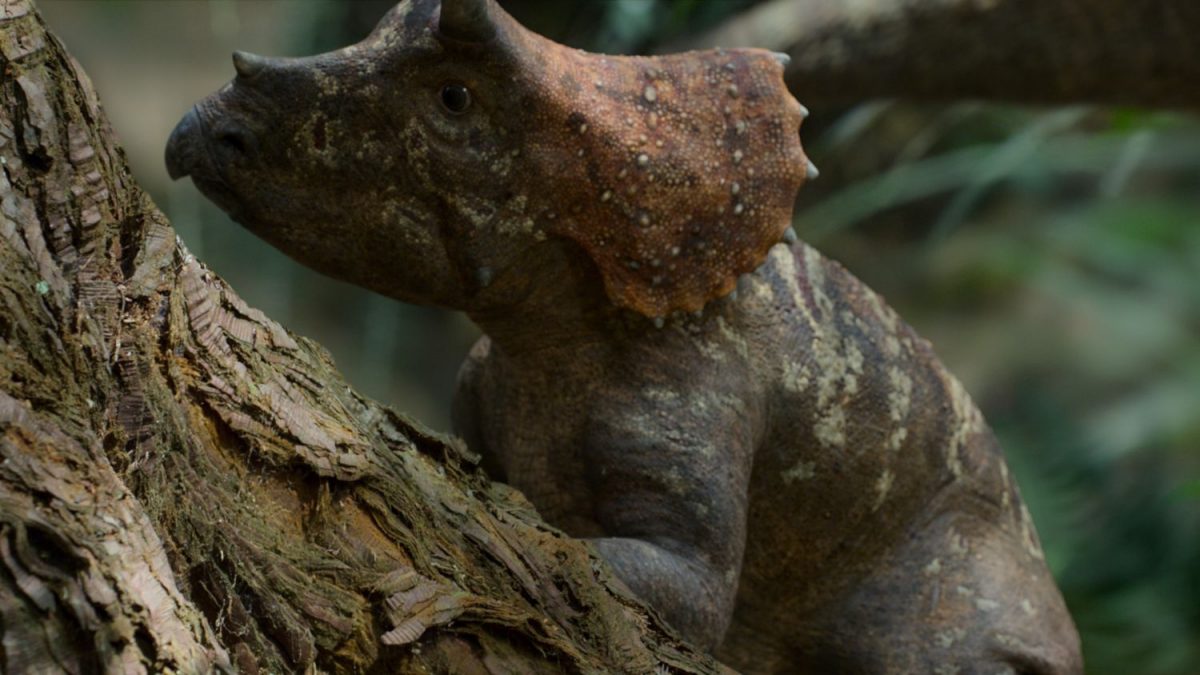
“If you’re going to be authentic, about as if you are actually filming these animals for real, you have to replicate that. I think that when you see the images in the show, they feel as if they were filmed by real people in real-world environments,” assured Walker in a press conference that Geek Culture attended.
Gunton, with his repertoire of making some of the best documentaries, Walker with his past experiences producing for National Geographic and Favreau, for his CGI-magic on Disney’s most beloved franchises including Marvel Studios and Star Wars, bring a bit of movie making magic to the series, as Prehistoric Planet fuses science, CGI and real-world filmmaking to bring the dinosaurs to life in the most realistic way possible. .
“Jurassic Park, you know, the first, and still for my money, one of the best utilizations of CGI! When Spielberg had originally done it, they were dealing with scales and skin and that took everything that they had from a processing perspective,” said Favreau. “Well, now we can do fur. We can do feathers. There’s so much more that’s available to us just from a feasibility standpoint that really, the research and our imaginations are the only limitations now.”

Lending experience from making Jungle Book and The Lion King, Favreau shared how he worked with effects house MPC (Ghostbusters: Afterlife, Spider-Man: No Way Home) to develop a set of cinematic trolls that allowed him to emulate what it would be like to film real animals using real camera equipment, and translate that onto a screen.
When making The Lion King, Favreau barely left the studio and was able to render all of the images and create them in a photo-realistic way thanks to all of the groundbreaking technology developed. This was later applied when making Prehistoric Planet.
“Instead of having animals that were doing scenes together or singing together, we were actually trying to fool the audience into believing that they had a privileged view into the past, to be able to be a fly on the wall as these creatures just behaved in a naturalistic way,” continued Favreau.
“And that’s the goal, right? The goal is to make it look like we just had a camera, we went back there.”
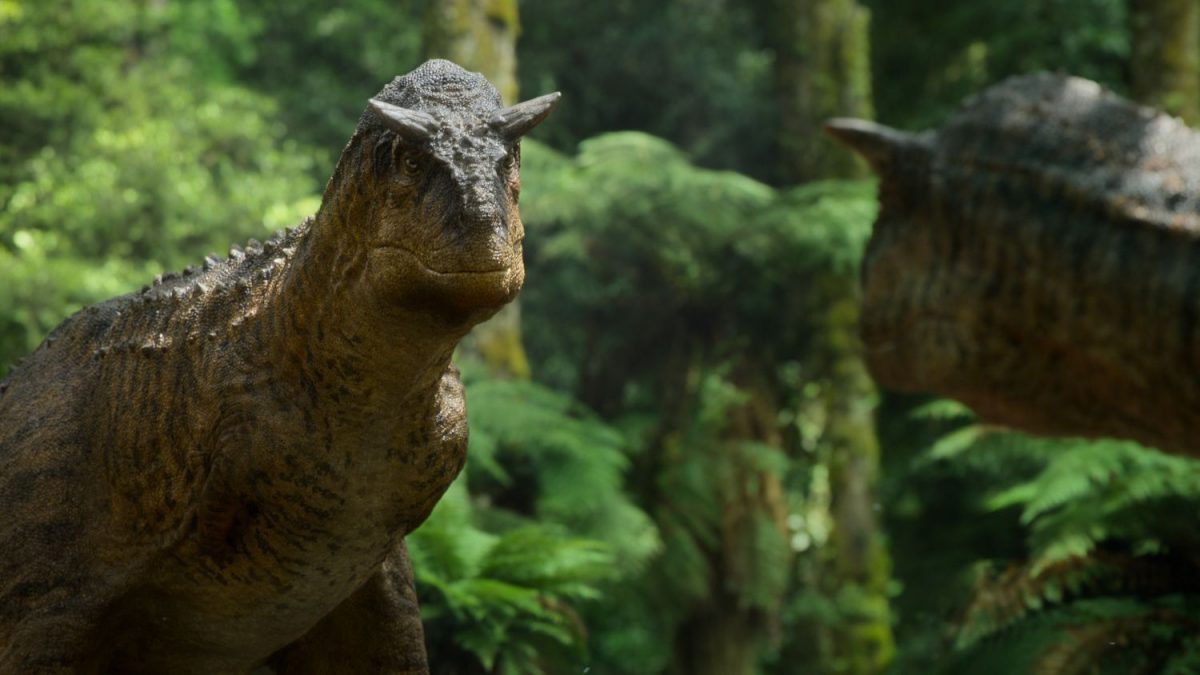
The makers of Prehistoric Planet also involved palaeontologist Darren Naish, an expert in dinosaurs and other animals of the time, in the process. Whilst it’s not new to consult an expert when making documentaries, Naish did more than that and served as a live-in expert who was heavily involved and embedded in the documentary making process.
“Ordinarily, experts are consulted kind of on an ad-hoc basis. They’re used here and there. I had very deep involvement in all appropriate steps of this project. I think that really has made quite the difference,” said the palaeontologist.
“I think it was important to have that involvement. And as a consequence, you’re seeing as best as possible an up-to-the-minute, cutting-edge portrayal of our scientific understanding of these animals for the first time ever.”

So what exactly can audiences expect from Prehistoric Planet? For starters, the docuseries will be narrated by the brilliant David Attenborough, a voice well-known for narrating the likes of Our Planet, Planet Earth and The Green Planet among many others. Viewers will be taken on an educational and captivating journey as the renowned biologist and natural historian narrates all five episodes, each episode focusing on various dinosaurs and prehistoric creatures. Some of the dinosaurs viewers can look forward to include the Tyrannosaurus Rex, Triceratops, Velociraptor and the Deinocheirus amongst many others.
And just like Planet Earth, Prehistoric Planet delves into the various habitats these creatures live in. This is because the creators believe that a creature’s habitat is just as important as the animal itself as it gives real insight into the way said animal behaves and interacts with their world around them.
“Each episode looks at a different habitat of that time. You look for the animals that most represent the challenges that those environments provide. But also, you also have a little bit of a matrix. You look for the big powerful one, you look for the hunting story, look for the mating sequence, you look for the slightly comedic one, because animals are always funny. They’re funny today, and I’m sure they were funny 66 million years ago,” said Gunton.
“So, there’s quite a detailed tapestry that you try and weave different things. One of our ambitions was, this was an incredibly rich time in the earth’s history, the number of animals was enormous. It was a golden age of animals.”
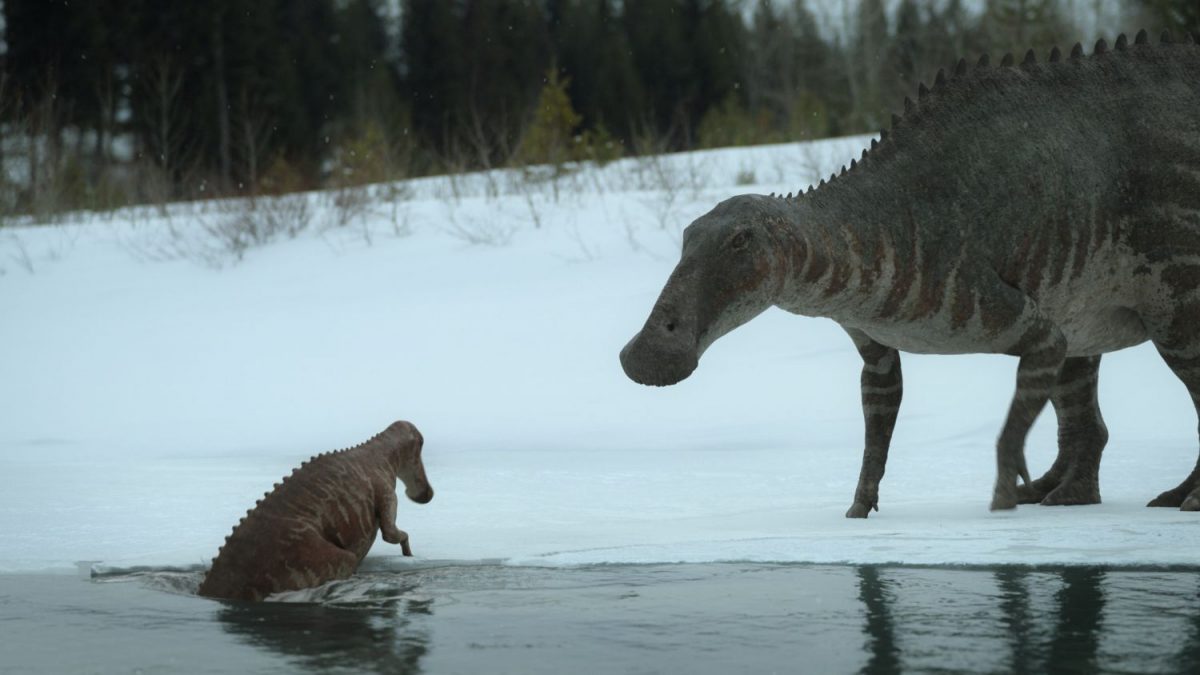
Although it was the golden age of animals, the series mainly focused on the Cretaceous period, particularly the Maastrichtian period. This is simply because the period of time holds the most interesting dinosaurs, as well as household names like the Tyrannosaurus Rex and Triceratops. According to Naish, this period was also the best-preserved period, meaning that the series is as accurate and extensive with its information.
“It’s the youngest part of not just the Cretaceous but of the whole age of dinosaurs, the Mesozoic era. It’s also the bit for which we have the most amount of information. It’s the bit that’s best-preserved in the fossil record,” justified Naish.
“You don’t just have the animals themselves well-represented but their environments are better known. The animals and plants that they lived with are better known. So, if you want to portray behavior realistically, if you want to portray real environments realistically as we’ve done, you kinda have to start with the Maastrichtian.”

Despite having the best on the team and a treasure cove of hard-earned evidence at their disposal, making Prehistoric Planet did come with challenges too. The biggest challenges the team faced were getting the animated animals look realistic, as well as apply what they know to real situations.
Unlike many other documentaries on animals where creators could easily shoot and record with a camera pointed at the creature, the animals featured in Prehistoric Planet no longer exist. The animators had to not only reimagine, but also reconstruct some of the creatures based on the current evidence presented.
For example, the giant long-necked Sauropod dinosaurs may not just use their necks as a structure to increase their reach and give them a bigger range of feeding area – it could also be used as a structural display. As seen in the evidence collated, the Sauropods were pneumatic and had inflatable air sacs distributed throughout their bodies. Understanding this, and then attempting to bring that visually challenged the team intellectually but thankfully, the creators got around it by learning from similar animals that do exist. In this case, birds.
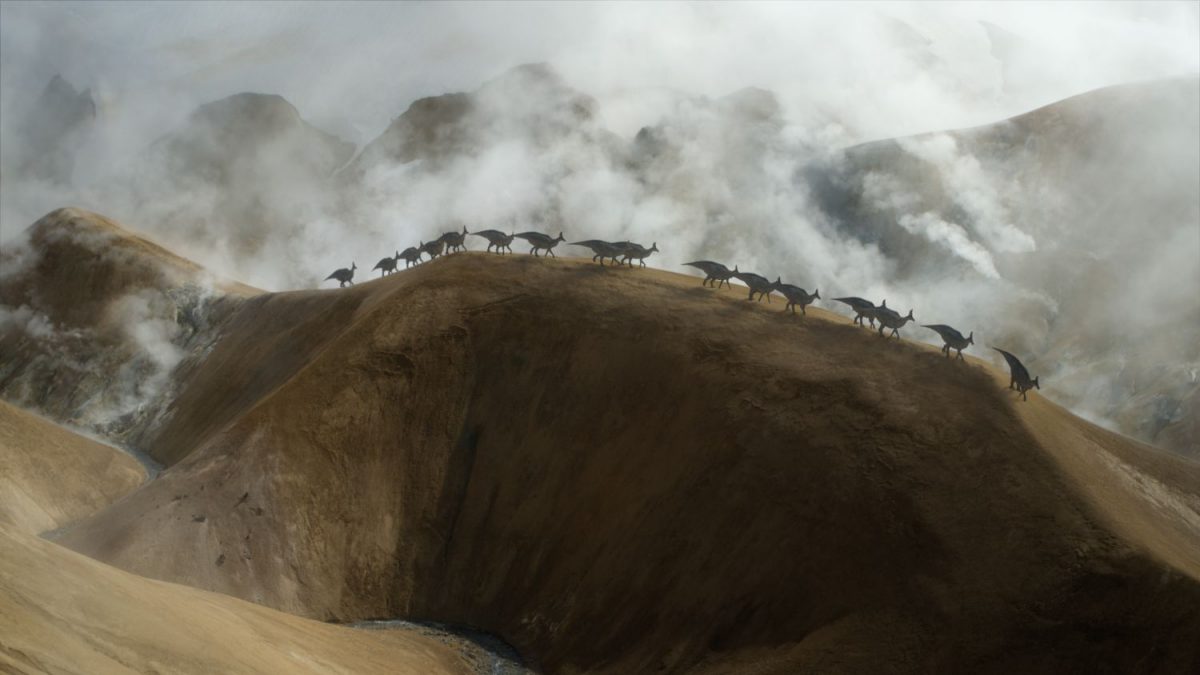
“Birds, which are a group of living dinosaurs, have these inflatable air sacs, as well. So if you have a giant neck that could well be used in display, and if you have this inflatable air sac system, does it mean that some of these animals might have had frigate bird style actual inflatable balloon-type structures on their neck?” pondered Naish.
“So we show one species of sauropod, the Argentinian Dreadnoughtus battling for mating rights, females evaluating the males based on how good their display is, and we show them doing this remarkable display. And that is an example of something that fringes, ‘This is a genuine possibility that this could have been a thing’, and getting it right was a real challenge.”
Despite the challenges it posed, the team felt like now, more than ever, is the right time to do a docuseries on these creatures. With global warming and the deterioration of natural habitats, Earth and nature are getting more and more fragile. With Earth vulnerable, the interest in her history, at least according to showrunner Walker and Gunton, has increased. And what’s a bigger part of Earth’s history other than the dinosaurs that roamed 66 million years ago?
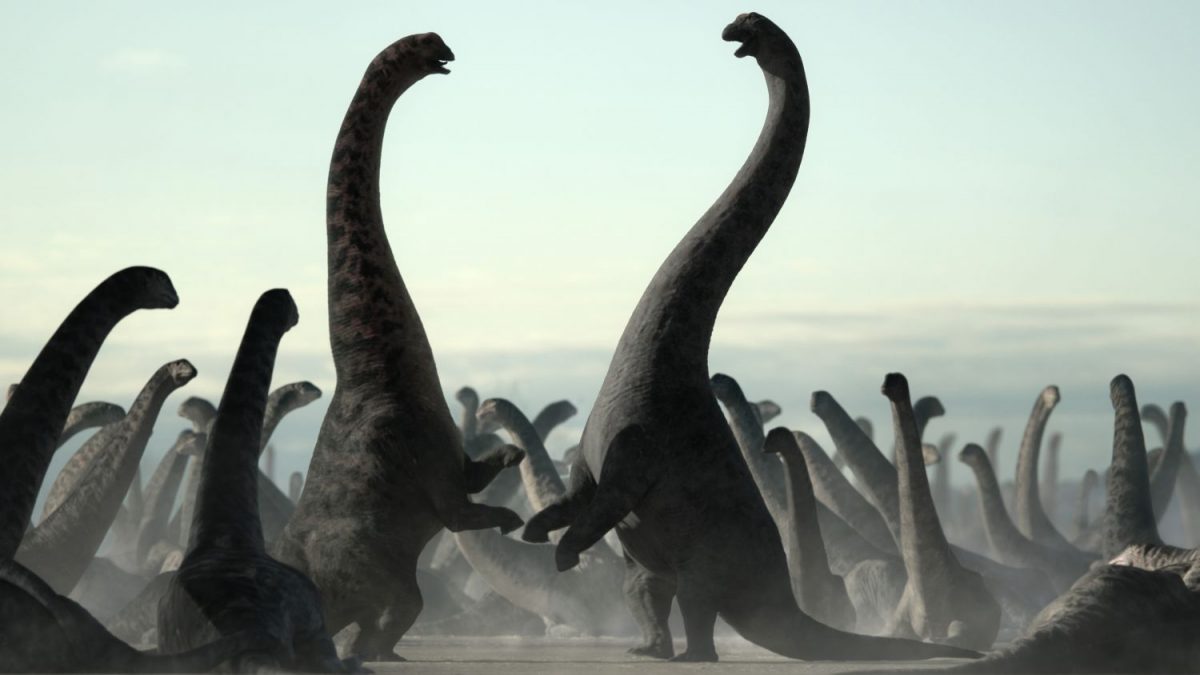
“I think that’s growing enormously. I’ve been doing this for over 30 years, and I’ve never been busier in my life making wildlife shows because there seems to be a global appreciation and understanding and interest in both the wonders of the planet, but also its fragility and just another perspective on the planet. One that, you know, is historical, but still shows the wonder and how extraordinary this place is that we live on. I just think that’s another reason why it’s the right time to do this,” said Gunton.
Walker concludes, “We often got quite emotional whilst making it. Thinking of the magnitude of what we’re portraying, but it’s no longer here in that glory. You know, as Mike says, the fragility of the natural world is on everybody’s minds at the moment and it’s been a fragile place for a long time. And these magnificent creatures are no longer around. And when we were depicting them, you quite often think, what a shame that we can’t actually go and see a T-Rex for real.”
Prehistoric Planet is now showing on Apple TV+.













